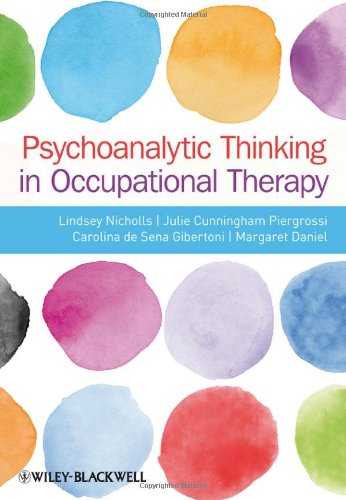

Most ebook files are in PDF format, so you can easily read them using various software such as Foxit Reader or directly on the Google Chrome browser.
Some ebook files are released by publishers in other formats such as .awz, .mobi, .epub, .fb2, etc. You may need to install specific software to read these formats on mobile/PC, such as Calibre.
Please read the tutorial at this link. https://ebooknice.com/page/post?id=faq
We offer FREE conversion to the popular formats you request; however, this may take some time. Therefore, right after payment, please email us, and we will try to provide the service as quickly as possible.
For some exceptional file formats or broken links (if any), please refrain from opening any disputes. Instead, email us first, and we will try to assist within a maximum of 6 hours.
EbookNice Team

Status:
Available4.6
6 reviews
ISBN 10: 0470655860
ISBN 13: 9780470655863
Author: Lindsey Nicholls, Julie Cunningham Piergrossi, Carolina de Sena Gibertoni, Margaret Daniel
Divided into three overarching themes, theory, application and research, this cutting edge book explores the influence of psychoanalytic theories on occupational therapy practice and thinking. It incorporates a new conceptual model (the MOVI) to guide practice, which uses psychoanalysis as a theoretical foundation for understanding therapeutic relationships and the ‘doing’ that takes place in clinical practice.
Using practice models and incorporating many clinically applied examples in different occupational therapy settings, this introductory text to psychoanalytic theory will appeal to students and practising clinical and academic occupational therapists worldwide and from different fields of practice from paediatrics and physical disability to older adult care and mental health.
1 Introduction 1
Section 1 Psychoanalytic Theory Interwoven with Occupational Therapy 13
2 The ‘Therapeutic Use of Self’ in Occupational Therapy 15
3 An Occupational Therapy Perspective on Freud, Klein and Bion 32
4 The Function of ‘Doing’ in the Intermediate Space: Donald Winnicott and Occupational Therapy 57
5 Beyond Bowlby: Exploring the Dynamics of Attachment 68
6 Re-awakening Psychoanalytic Thinking in Occupational Therapy: From Gail Fidler to Here 87
Section 2 Psychoanalytic Occupational Therapy: A Relational Practice Model and Illuminating Theory in Clinical Practice 103
7 MOVI: A Relational Model in Occupational Therapy 105
8 Let the Children Speak 128
9 Working with Difference 145
Section 3 Further Psychoanalytic Thinking: Research and Training 163
10 Psychoanalytic Thinking in Research 165
11 Understanding the Use of Emotional Content in Therapy Using Occupational Therapists’ Narratives 186
12 Training Experiences to Develop Psychoanalytic Thinking 202
13 The Relational Space of Supervision 222
Index 239
psychoanalytic thinking
psychoanalytic theory occupational therapy
psychoanalytic theory book
psychoanalytic books
psychoanalytic theory examples in books
a psychoanalytic psychologist
Tags: Lindsey Nicholls, Julie Cunningham Piergrossi, Carolina de Sena Gibertoni, Margaret Daniel, Psychoanalytic, Occupational